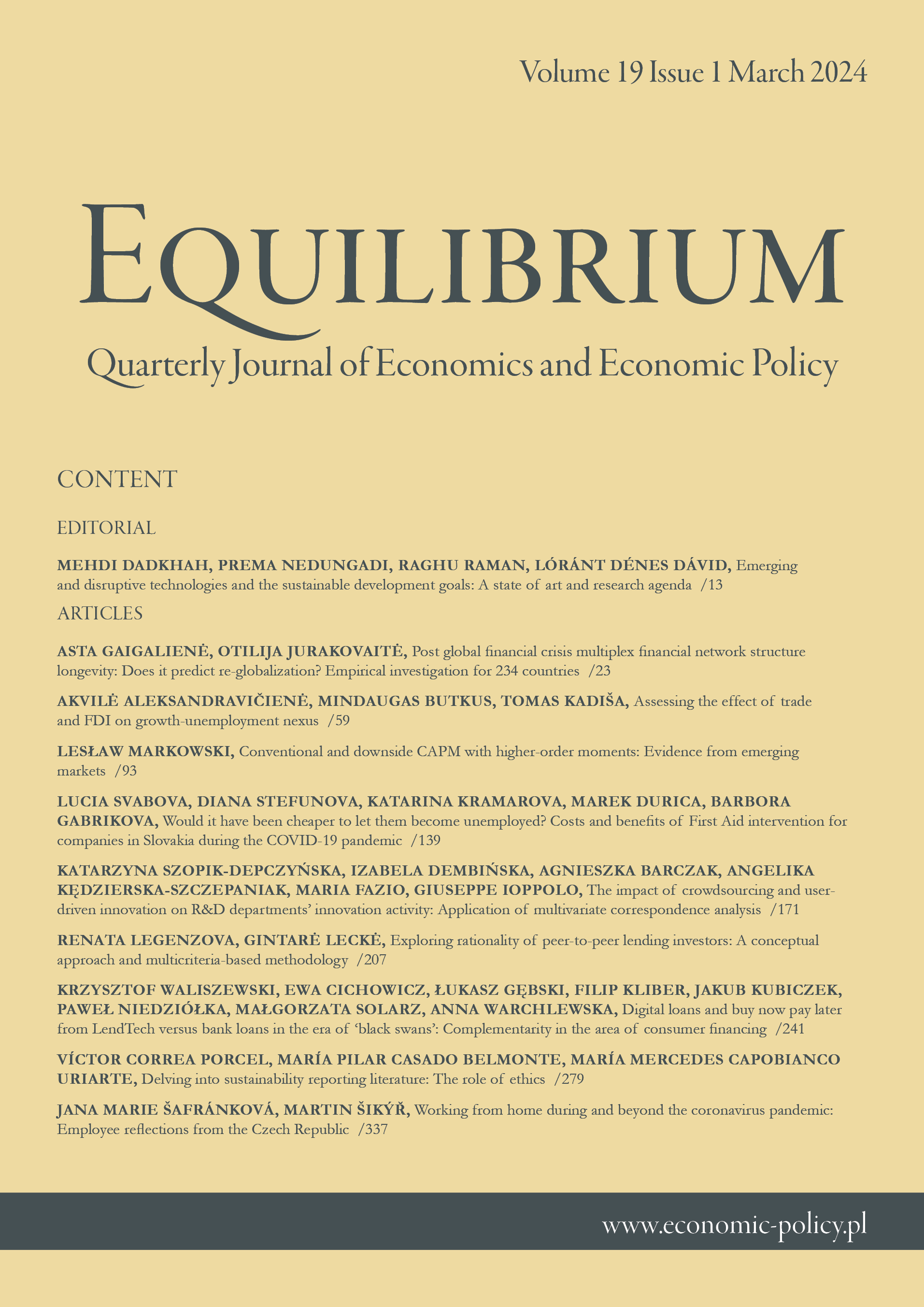Post global financial crisis multiplex financial network structure longevity: Does it predict re-globalization? Empirical investigation for 234 countries
Post global financial crisis multiplex financial network structure longevity: Does it predict re-globalization? Empirical investigation for 234 countries
Author(s): Asta Gaigalienė, Otilija JurakovaiteSubject(s): National Economy, Supranational / Global Economy, Financial Markets, Socio-Economic Research
Published by: Instytut Badań Gospodarczych
Keywords: multiplex financial network; structure longevity; global financial crisis; re-globalization;
Summary/Abstract: Research background: International capital flows show decreasing trend after each financial crisis as countries become unwilling to invest in risky counterparties. Recent discussions over structural changes within the global financial network suggest that its structure may be still undergoing some changes. Uncovered weaknesses of over-connectedness with unstable un- ally countries during global financial crisis were further highlighted by recent Covid-19 pan- demic. However, previous research suggest that important structural changes happened after global financial crisis. Thus, such situation raises a question whether post global financial crisis multiplex network structure is long-term and is it exhibiting re-globalization pattern as suggested by re-globalization megatrend.Purpose of the article: The main objective of the paper is to assess post global financial crisis multiplex financial network structure longevity and to identify whether it exhibits re- globalization pattern. Methods: Multiplex financial network mapping, network topological analysis and structure longevity methods were employed to evaluate network connectedness, topological structural properties of multiplex financial network and its’ structure longevity. 5-layer multiplex finan- cial network was mapped for different types of capital flows for each layer: net direct and portfolio investments in debt, equity and net banking assets for each year in the post global financial crisis period 2009–2020. Each network layer employed bilateral data from up to 234 countries of the world. Next step of research employed a set of network-level measures defin- ing topological features of each network in the period of 2009–2020 in order to capture the trend of structural changes and evidence of re-globalization. The final stage analyzes multi- plex financial network structure by layer and country longevity. Findings & value added: Analysis reveals that stock (positions) multiplex financial network aggregate connectedness, i.e., density and value, increased during post- global financial crisis period until Covid-19 pandemic period, thus, suggesting that globalization in terms of stock is continuing. Topological structural properties of multiplex financial network changed as num- ber of strongly and weakly connected countries decreased and more countries became includ- ed in network. Longevity analysis of layer and country structure within multiplex financial network reveal that banking and debt investments are increasing since 2018, while equity part is decreasing. Developed countries, i.e., the United Kingdom and Germany, decrease in mul- tiplex financial network structure, while developing, especially from Asia region (i.e., Hong Kong SAR, China and Singapore) increase. Such empirical results support the re-globalization megatrend in terms of investment type and counterparty structure as highlighted by most recent scientific discussion showing that it started early after global financial crisis. Research also uncovers some regional trends of Asia region increasing in investment network structure, while Europe decreasing. As developing countries attract more and more investment and further develop, global cost saving and, thus, returns from global investment into these coun- tries may be decreasing, resulting in lower gain from globalization. Our analysis may facilitate investment strategy decisions by suggesting that even though gains from globalization might be decreasing, instead of localization, countries could follow ally investment strategy to man- age the risk of over-dependency from unstable counterparty while preserving globalization wealth.
Journal: Equilibrium. Quarterly Journal of Economics and Economic Policy
- Issue Year: 19/2024
- Issue No: 1
- Page Range: 23-57
- Page Count: 35
- Language: English

